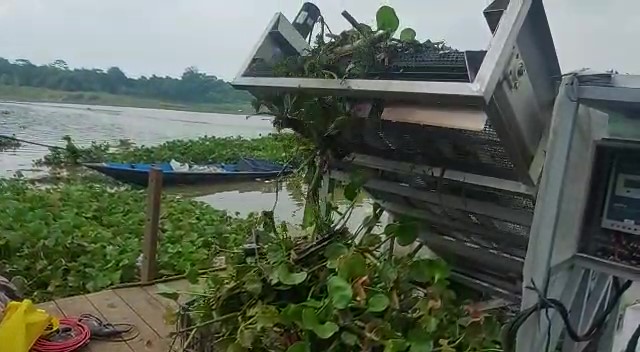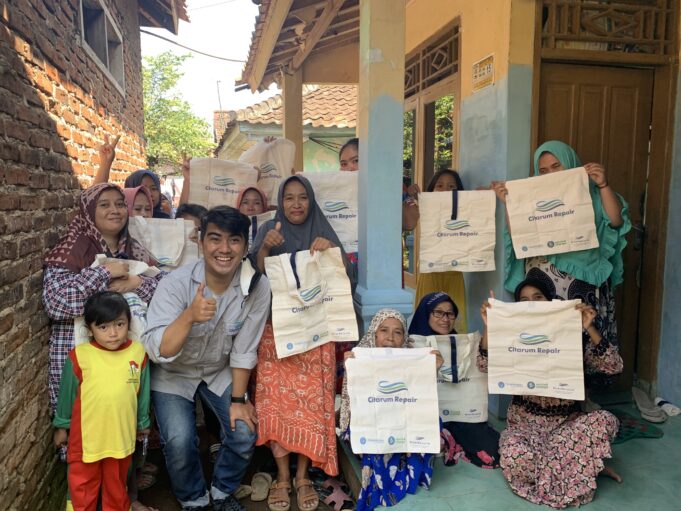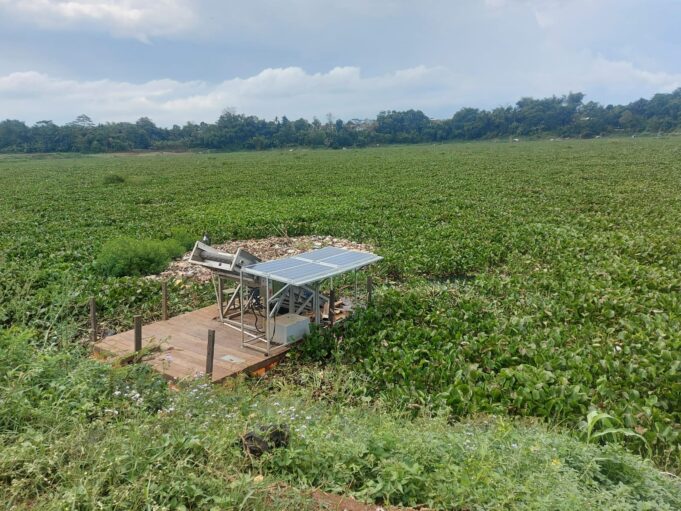With plastic pollution increasingly in the public spotlight, we have seen a surge of initiatives and ventures to clean rivers and oceans from debris and waste. But like water flowing downstream, pollution on a river is a responsibility that seems to float away. While the conversation around accountability for plastic pollution thrives and we try to figure out how to close the tap, affected communities continue to struggle to manage the waste already present in their environment. Here, urgent problems such as poverty and inequality often make investing in the creation or renewal of waste management systems less of a priority. Meanwhile, waste is choking life out of rivers, and people who used to make a living by fishing are instead foraging the same waters to find valuable waste to sell.





How to Act Locally to Solve a Global Problem?
Like many others out there, our projects at RiverRecycle include a technology that cleans plastic waste from rivers. Since floating debris is composed of a mix of organic and inorganic materials, removing plastic out of a river is a complex process that reduces only part of the pollution. But this approach doesn’t prevent the input of new waste. We decided to go one step further to engage the local communities by collecting all the floating waste and sorting it on land, where it can be seen and doesn’t float away. We’ve created a permanent waste management system that will stay in place even when the spotlight moves elsewhere.


Corporate Social Responsibility (CSR) Investing and Community Engagement: a Winning Combo for Economic Development
If no one claims liability for this river waste problem, it is unfair to ask affected populations to pay for the solution — especially when those populations are underserved and already bear an unequal burden. In this spirit, we require no monetary investment from the local communities. Grants from foundations and companies looking for CSR projects offering measurable outcomes finance RiverRecycle’s river cleaning technology installation. Afterward, the waste collected is recycled and sold, with the income reinvested to fund the system. Local partners such as Greeneration Foundation and Waste4Change contribute awareness and education programs about reducing, reusing, and recycling waste. These actions, paired with the installation of waste collection points for recycling, generate a tangible positive change.


Local employment in sorting and recycling plastic is only part of our
solution. We have a “zero waste to landfill” mentality, and focusing on plastic is not enough; we work to find a commercial use for all the waste we collect. This approach allows us to support local producers in scaling up their activities and entering larger markets.
The Case of Citarum Saguling: Creating a Global Network for the Local Economy
River waste characteristics vary from site to site, and we never know how much of the debris we collect will be composed of plastic. That’s the case at our Citarum Saguling site, where we currently collect 800 kg of waste daily. Up to 60% of that is composed of water hyacinths. At its full maturity, this installation is expected to collect 50,000 kg of waste per day, with a relative increase in the harvesting of water hyacinths.


As Waste4Change’s exhaustive post explained, water hyacinths are a grave problem. Here in Indonesia, the Bening Saguling Foundation created a local commercial venture that harvests this invasive plant and uses the stems as raw material to produce bags, boxes, mats, and similar sellable items. Aware that the difficulty of harvesting water hyacinths in considerable quantities has hindered the development of this venture, we achieved a mutually beneficial partnership: the volumes of raw materials we extract from the river daily will allow the Bening Saguling Foundation to scale up their production. The goal is to increase the output of hand-woven water hyacinth baskets to about 350,000 pieces annually, opening the door for the producers to supply big corporations of global influence. This change will not only have a positive impact on the local economy, but the river’s biodiversity as well.


When we decided to act on plastic pollution, we chose to create something permanent, affordable, and adaptable to each situation. But we also wanted to work with the local communities for real and scalable economic change. Our approach might seem complicated since it involves many moving parts and requires coordination and networking among different players. Yet the positive results we are achieving are a daily validation that if we focus together on the solution, we can create effective and positive change where it is needed.





